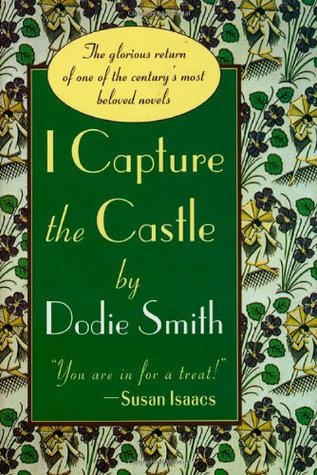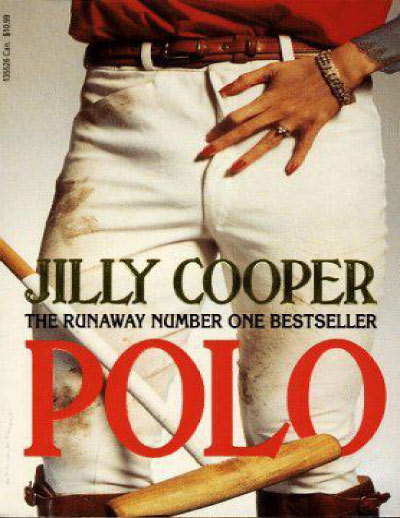by Elanor Moran)
With the explosion of marketing for Mother's Day in full effect this week, it's easy to forget the women left behind in the half light. I'm talking about stepmothers, so often maligned and mythologized. Our indoctrination starts in childhood with the oft-repeated cast of characters in classic fairytales. The Wicked Stepmother in Snow White, extracting a terrible revenge when she's told her stepdaughter is "the fairest of them all" or Cinderella's evil equivalent, leaving her unwanted charge behind to sweep the grate whilst she takes her ugly offspring to the ball in her place.
It's a powerful cultural phenomenon, but is it anything more than another way to keep women down? Research shows that stepmothers are more at risk of depression than either stepfathers or mothers. It certainly stirs up acrimony between women. Celebrity stepmother Jada Pinkett Smith caused a furor last year when she attacked another woman struggling with the role on Facebook. "Your behavior is that of an insecure child who needs to recognize her own weaknesses" she raged. "We cannot say we love a man and then come in between him and his children."
As step-parenting expert Wednesday Martin, Phd, wrote in her celebrated 2009 book,Stepmonster, the expectations put on the role can seem nothing short of impossible. "With the specter of the wicked stepmother floating above our heads, we are under enormous pressure to prove -- to the world and to ourselves -- that we are not corrupt or sadistic, that we are good, even perfect, beyond reproach." I, like any other woman who has dated a single father, know how hard it is to walk the line between showing you care and looking like you're sticking your nose in.
The seven literary stepmothers I explore below have had their own battles to fight, with varying degrees of success. Joan Slater nee Potter in Toast by Nigel Slater:The famed cooking writer lost his mother to an asthma attack age nine, leaving him with his cold and frightening father. The arrival of the second Mrs. Slater, a working class firebrand who cooked her way into his father's heart, should've been a cause for celebration. Unfortunately they loathed each other, competing for Mr. Slater's affections by cooking more and more elaborate meals and refusing to share recipes. "She made my life a misery" Slater has said, but perhaps his illustrious cooking career has something to do with his hard fought kitchen war. The role was played with gusto by Helena Bonham-Carter in the 2010 adaptation, but the real Joan's children were much less impressed than the critics by the portrayal of their dead mother.
Joan Slater nee Potter in Toast by Nigel Slater:The famed cooking writer lost his mother to an asthma attack age nine, leaving him with his cold and frightening father. The arrival of the second Mrs. Slater, a working class firebrand who cooked her way into his father's heart, should've been a cause for celebration. Unfortunately they loathed each other, competing for Mr. Slater's affections by cooking more and more elaborate meals and refusing to share recipes. "She made my life a misery" Slater has said, but perhaps his illustrious cooking career has something to do with his hard fought kitchen war. The role was played with gusto by Helena Bonham-Carter in the 2010 adaptation, but the real Joan's children were much less impressed than the critics by the portrayal of their dead mother. Mrs. Dashwood in Sense and Sensibility by Jane Austen: Mrs. Dashwood is the antithesis of the wicked stepmother, a woman who meekly cleaves to her stepson's will when her husband dies, and, as per the rules of primogeniture, leaves all his property to his son from his first marriage. Despite a deathbed promise to look after the second family, John lets his scheming wife Fanny persuade him to throw her and her three daughters out of their home. Mrs. Dashwood must go to extraordinary lengths to find worthy husbands for her daughters, despite the shame of their reduced circumstances. The older Dashwood sisters were played to perfection by Emma Thompson and Kate Winslet in the 1995 Ang Lee adaptation.
Mrs. Dashwood in Sense and Sensibility by Jane Austen: Mrs. Dashwood is the antithesis of the wicked stepmother, a woman who meekly cleaves to her stepson's will when her husband dies, and, as per the rules of primogeniture, leaves all his property to his son from his first marriage. Despite a deathbed promise to look after the second family, John lets his scheming wife Fanny persuade him to throw her and her three daughters out of their home. Mrs. Dashwood must go to extraordinary lengths to find worthy husbands for her daughters, despite the shame of their reduced circumstances. The older Dashwood sisters were played to perfection by Emma Thompson and Kate Winslet in the 1995 Ang Lee adaptation. Topaz in I Capture The Castle by Dodie Smith:Smith was most famous for The 101 Dalmatians, but this story of an aristocratic family forced to sell off their furniture to preserve their life in a crumbling castle was her first novel. The book is narrated by teenage wannabe writer, Cassandra, who captures all the shenanigans in her diary. Her stepmother is the glamorous, flighty Topaz, an artist's model who sometimes enjoys surveying the terrain in nothing but hip boots. Topaz schemes to save them from penury by matchmaking Cassandra's older sister, Rose, with their new American landlord, Simon, with ultimately disastrous consequences. Topaz is a wild and naughty stepmother with nothing but the best intentions.
Topaz in I Capture The Castle by Dodie Smith:Smith was most famous for The 101 Dalmatians, but this story of an aristocratic family forced to sell off their furniture to preserve their life in a crumbling castle was her first novel. The book is narrated by teenage wannabe writer, Cassandra, who captures all the shenanigans in her diary. Her stepmother is the glamorous, flighty Topaz, an artist's model who sometimes enjoys surveying the terrain in nothing but hip boots. Topaz schemes to save them from penury by matchmaking Cassandra's older sister, Rose, with their new American landlord, Simon, with ultimately disastrous consequences. Topaz is a wild and naughty stepmother with nothing but the best intentions. Livvy in The Last Time I Saw You: In my new novel, my heroine Livvy, falls in love with her one time best friend turned frenemy's widower. But Sally's traumatized six-year-old daughter Madeline is part of the package, and she is tightly holding onto secrets about the circumstances surrounding her mother's tragic death. When Madeline "outs" William and Livvy as a couple at her christening, the relationship crumbles. But can Livvy find a way to persuade the grieving little girl to unburden herself and form a new family out of the ashes of the old?
Livvy in The Last Time I Saw You: In my new novel, my heroine Livvy, falls in love with her one time best friend turned frenemy's widower. But Sally's traumatized six-year-old daughter Madeline is part of the package, and she is tightly holding onto secrets about the circumstances surrounding her mother's tragic death. When Madeline "outs" William and Livvy as a couple at her christening, the relationship crumbles. But can Livvy find a way to persuade the grieving little girl to unburden herself and form a new family out of the ashes of the old? Taggie Campbell-Black in Polo by Jilly Cooper:Taggie is the long suffering wife of notorious womanizer Rupert Campbell-Black, the anti-hero of Cooper's Rutshire Chronicles (Black is based on Camilla Parker-Bowles's polo-playing first husband, Andrew). Taggie is the woman who finally captures his roving heart, displaying a degree of saintly goodness that would put Mother Theresa to shame. She soon finds herself stepmother to his three children, one of whom is a lovechild, and an adopted mother to a couple more, all without breaking a sweat. There is something faintly disturbing about quite how passive, almost vacuous, Cooper makes the woman who tames the untamable Campbell-Black. "She had the general apologetic clumsiness of an Irish wolfhound, who can't help knocking teacups off with its tail."
Taggie Campbell-Black in Polo by Jilly Cooper:Taggie is the long suffering wife of notorious womanizer Rupert Campbell-Black, the anti-hero of Cooper's Rutshire Chronicles (Black is based on Camilla Parker-Bowles's polo-playing first husband, Andrew). Taggie is the woman who finally captures his roving heart, displaying a degree of saintly goodness that would put Mother Theresa to shame. She soon finds herself stepmother to his three children, one of whom is a lovechild, and an adopted mother to a couple more, all without breaking a sweat. There is something faintly disturbing about quite how passive, almost vacuous, Cooper makes the woman who tames the untamable Campbell-Black. "She had the general apologetic clumsiness of an Irish wolfhound, who can't help knocking teacups off with its tail." Catherine Tabor in Father of the Rain by Lily King: It's the summer of 1974, in the midst of Watergate, when 11-year-old Daley Amory's mother screws up the courage to leave the boozy, charismatic father she adores. Soon he's moved a neighbor, Catherine Tabor, into their luxurious house, and the two of them are swigging martinis like they're going out of fashion and treating Daley like an unwanted guest. Catherine puts orange juice in her vodka during the day for the sake of propriety, and let's her generous bosom escape from her teeny weeny bikini. When Daley stumbles in on the two of them in bed she's left traumatized, still picking up the broken pieces of the father/daughter relationship in adulthood, long after Catherine has fled the marriage.
Catherine Tabor in Father of the Rain by Lily King: It's the summer of 1974, in the midst of Watergate, when 11-year-old Daley Amory's mother screws up the courage to leave the boozy, charismatic father she adores. Soon he's moved a neighbor, Catherine Tabor, into their luxurious house, and the two of them are swigging martinis like they're going out of fashion and treating Daley like an unwanted guest. Catherine puts orange juice in her vodka during the day for the sake of propriety, and let's her generous bosom escape from her teeny weeny bikini. When Daley stumbles in on the two of them in bed she's left traumatized, still picking up the broken pieces of the father/daughter relationship in adulthood, long after Catherine has fled the marriage. Margot in The Hand That First Held Mine by Maggie O'Farrell: Motherhood explored from every conceivable angle, warts and all. Artist Elina is recovering from the traumatic birth of her son, but as her partner, Ted, struggles to help her, he begins to have disturbing flashes of memory about his own childhood. As a parallel, passionate story unfolds in the '50s he gradually discovers the shocking secrets of his early life. Could his icy, awkward mother Margot not be his mother at all? Margot is a secret stepmother, never able to make the difficult role her own.
Margot in The Hand That First Held Mine by Maggie O'Farrell: Motherhood explored from every conceivable angle, warts and all. Artist Elina is recovering from the traumatic birth of her son, but as her partner, Ted, struggles to help her, he begins to have disturbing flashes of memory about his own childhood. As a parallel, passionate story unfolds in the '50s he gradually discovers the shocking secrets of his early life. Could his icy, awkward mother Margot not be his mother at all? Margot is a secret stepmother, never able to make the difficult role her own.
Follow Eleanor Moran on Twitter:www.twitter.com/eleanorkmoran
No comments:
Post a Comment